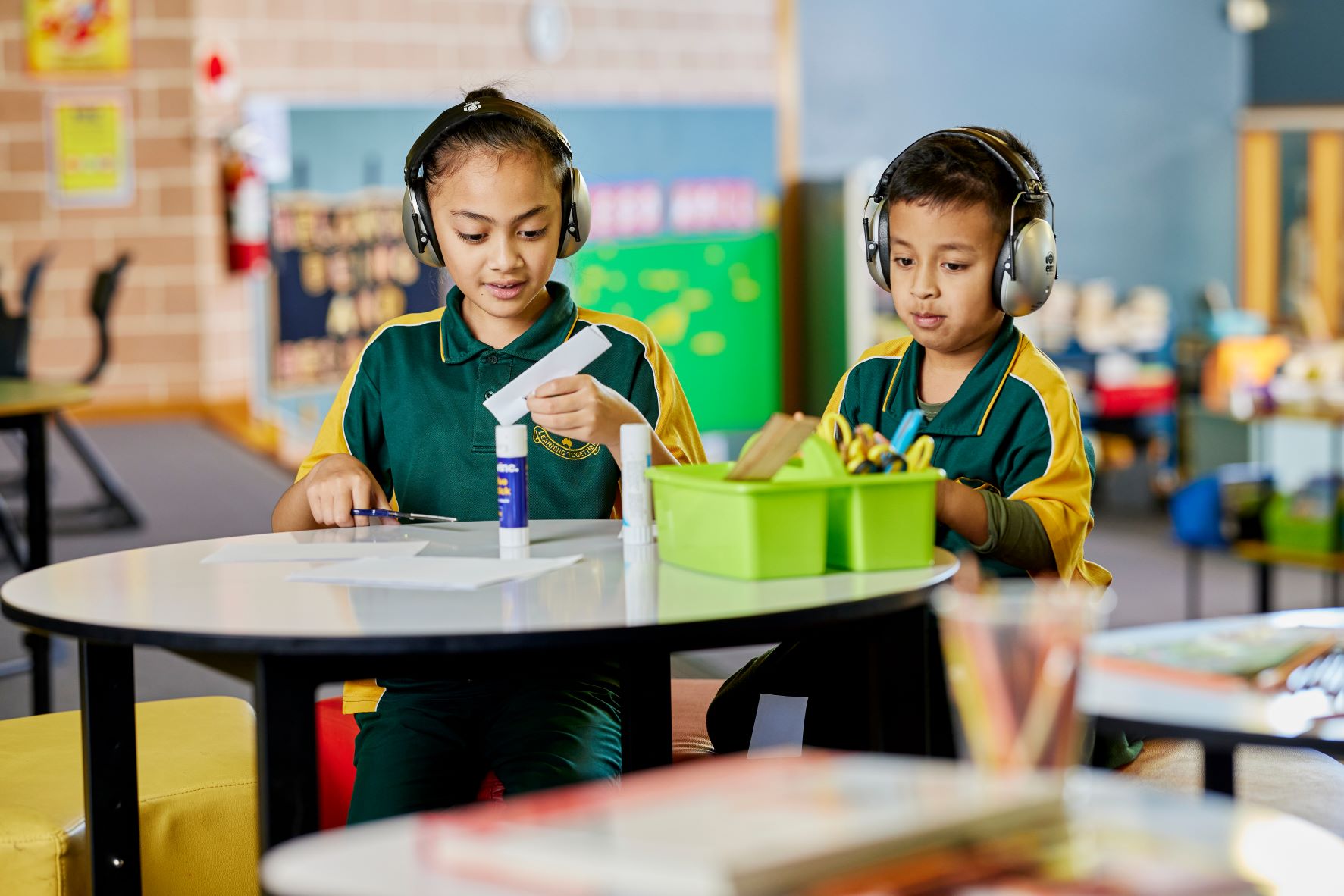Examples of practice - Remi
Remi is a year two student who works quietly in class. She enjoys and excels in literacy, and thrives on structured tasks that allow her to work sequentially, such as worksheets.
Remi is on the autism spectrum and has recently been diagnosed with Attention-Deficit/Hyperactivity Disorder (ADHD) – presenting as inattention. Classroom environments that are noisy, busy, stimulating, or distracting can disrupt Remi’s ability to complete work, and cause her distress.
Clear and structured directions support Remi to complete work independently. She tends to ‘daydream’ when verbal instruction is provided, including in one-to-one conversations, and loses track of the conversation or misses instructions if other supports or learning materials are not provided.
Remi does not tend to initiate conversations. She has a wide receptive vocabulary developed through her reading, however her spoken communication is more limited. Remi often uses gestures to support her communication at school and at home.
Discussions with Remi’s carer have identified that Remi’s communication is more limited at school than at home or with her psychologist. This is thought to be a combination of selective mutism, and her teacher having less experience or familiarity with Remi’s communication style.
Remi has a personalised learning and support plan, however this is due to be reviewed and updated. This example of practice will outline how Remi’s school, psychologist, and family worked together to support Remi’s voice and agency when revising her personalised learning and support plan.
What is the goal?
The goal is for Remi to have an active role in her learning, including in setting the goals, supports and strategies that will support her learning and inclusion at school. This means that Remi’s voice, preferences and experiences are positioned as central to all decisions made, and Remi’s participation in personalised learning and support planning is optimised and actively increased over time through supports and strategies that a) are adapted for her strengths, communication style, and abilities; and b) ensure she feels safe, confident, and valued.

What are Remi’s preferences for her involvement in learning and support planning?
The learning and support team ask Remi’s classroom teacher to use the Planning tool for promoting student agency within planning personalised learning to develop a clear understanding of Remi’s preferences for her involvement in learning and support planning. Given her age, attention, and communication style, they select a few questions that are most relevant to her, and provide this in a simple worksheet for her to complete with support. From this, they can see that:
Remi would like her carer to attend meetings, and for her classroom teacher and carer to share her preferences in meetings.
Remi would like her teacher to share 2-3 ideas that she can choose from.
Remi would like to use drawings or worksheets to share her views.
What do we know about Remi’s strengths, abilities, communication style, interests and strategies that have been helpful, that may be relevant for Remi’s involvement in learning and support planning?
Remi enjoys and excels in literacy and has a wide receptive vocabulary.
Remi thrives on structured tasks that allow her to work sequentially, such as worksheets.
Remi prefers a quiet, low stimulation environment.
Clear and structured directions support Remi to complete work independently.
Remi’s listening can be supported through gaining her attention, and providing very brief verbal points, along with written or visual summaries.
Remi is more confident communicating with her carer and psychologist.
Remi uses gestures to support her communication.
What evidence-informed strategies can be used to reach the goal?
The learning and support team used the Student agency within planning personalised learning and support guide to learn more about evidence-based strategies and resources that support student agency. After using this resource, the learning and support team identified some strategies that can be trialled to build on Remi’s existing strengths and help achieve the desired goal:
| Relevant strengths and insights |
Strategies |
|
To develop an understanding of Remi’s goals, ideas and preferences, collaborate with and support Remi with implementing the following strategies:
|
|
After the worksheet is completed, collaborate with and support Remi with implementing the following strategies:
|
|
|
School Excellence Framework alignment
Wellbeing
Effective classroom practice
Australian Professional Standards for Teachers alignment
Standard 1: Know students and how they learn
Audience
Primary teachers
Purpose
This example of practice can be used to inform school planning and teaching practice
Timeframes and when to use
This resource can be used at any time to provide further information and practice guidance
Evidence base
This resource was developed with the AllPlay Learn team who conducted a series of systematic reviews of the empirical literature, with over 177,000 articles screened. The resources remain up-to-date, with content reflecting best practice reviewed by a world-class multidisciplinary research team, led by Monash University.
Reviewed
June 2022. Share your feedback here